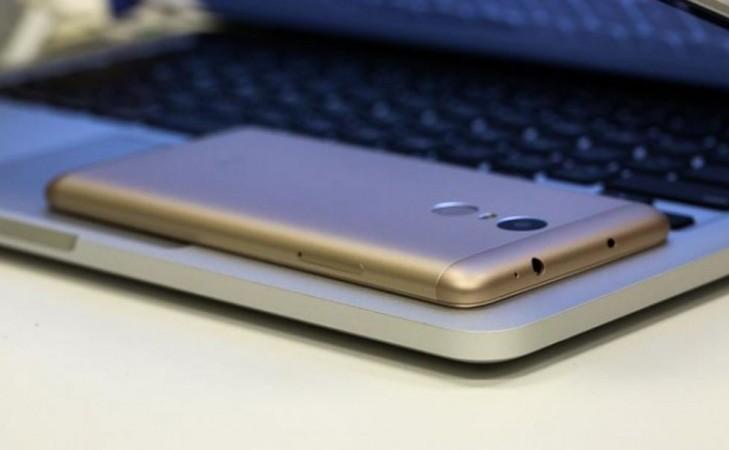
The Indian smartphone market has become extremely competitive, with consumers getting spoilt with plenty of choices, especially in the budget price range. Companies like Xiaomi, LeEco, Meizu, Micromax and YU have disrupted the market in such a way that consumers are looking for premium features at affordable prices. Some of the popular choices in the budget space right now are Xiaomi Redmi Note 3, Meizu M3 Note, LeEco Le 2, Moto G4 Plus, Lenovo ZUK Z1 and YU Yunicorn.
As these devices rise to power, popular smartphone maker Oppo has launched its latest A37 smartphone to take advantage of the popular demand. Oppo A37 is priced at Rs. 11,990, which is in line with most of the aforementioned premium smartphones. The company has a strong offline presence, which gives it an edge over its online rivals, but it remains to be seen how well it can compete against these high-performing devices.
In order to see how the A37 smartphone compares against the popular premium devices in the market, we picked one of the best selling smartphones, Xiaomi Redmi Note 3, for comparison.
Design and display
Xiaomi features a metallic finish and a unibody design. The speakers are placed at the back of the device along with the fingerprint sensor and the primary camera. The handset sports a 5.5-inch Full HD display with 178-degree viewing angle with Sunlight display tech and a special night mode.
Comparatively, Oppo A37 looks much like the other Oppo smartphones, which is a good thing as the company is lauded for its premium design. The ultra slim body measures just 7.7mm and weights136 grams, which offers a comfortable grip. The A37 smartphone features a compact 5-inch display with HD IPS screen, a 2.5D curved glass and Corning Gorilla Glass 4.
In terms of resolution, Xiaomi Redmi Note 3 has a better chance, but Oppo A37 offers better design.
Camera
Camera is one of the strongest suits for Oppo and the A37 is built to impress. The handset comes with an 8MP main camera with f/2.2 aperture and 1/3.2" sensor, and a 5MP front-snapper with 1/4" sensor and f/2.4 aperture. The individual pixel size of 1.4μm gives Oppo A37 the capability to shoot good quality images in low light. There are additional camera modes, such as beautification feature, screen flash for selfies and an Ultra HD mode that can create 24-megapixel images from its rear camera.
Xiaomi Redmi Note 3 is not a bummer in terms of camera. It features a 16-megapixel rear-facing camera with PDAF, dual-tone LED flash, dual ISP and HDR and a 5MP front-snapper with 36 smart beauty profiles.
We haven't had the chance to review the Oppo A37 yet, but the Redmi Note 3 offered impressive results during our review. However, Oppo's camera capabilities are well known, so we are guessing the A37 delivers equally impressive results with its camera.
Read: Xiaomi Redmi Note 3 Review
Performance
Xiaomi Redmi Note 3 is powered by Qualcomm Snapdragon 650 CPU, which is backed by 3GB RAM and 32GB storage. Oppo A37 is powered by 1.2GHz quad-core processor, 2GB RAM and comes with 16GB onboard storage along with microSD card support up to 128GB.
Both smartphones run Android 5.1 Lollipop OS, but the Redmi Note 3 features MIUI 7 and the A37 has Oppo's proprietary ColorOS 3.0 on top.
In comparison, the Redmi Note 3 seems to handle multiple tasks better than A37, but Oppo's smartphone will do just fine for daily operations.
Battery and add-ons
Xiaomi Redmi Note 3 has a bigger 4,050mAh battery, which the company claims lasts 14 hours with GPS navigation. Oppo's A37 is equipped with a 2,630mAh battery. There is no mention of the fast charging technology in the A37 smartphone, which would be a great USP for Oppo against its rivals in the same price range.
Xiaomi Redmi Note 3 overtakes the Oppo smartphone with additional features such as a fingerprint scanner, which works like a charm. Except for that, Oppo A37 has all the specs, including dual SIM card support, 4G LTE support, Wi-Fi and microUSB.
Correction at 1:20 pm on June 29: An earlier version of this article had reported that Oppo A37 is powered by 1.5GHz octa-core MediaTek MT6750 and features NFC, but the Indian version of the handset uses a 1.2GHz quad-core CPU and lacks NFC support.















